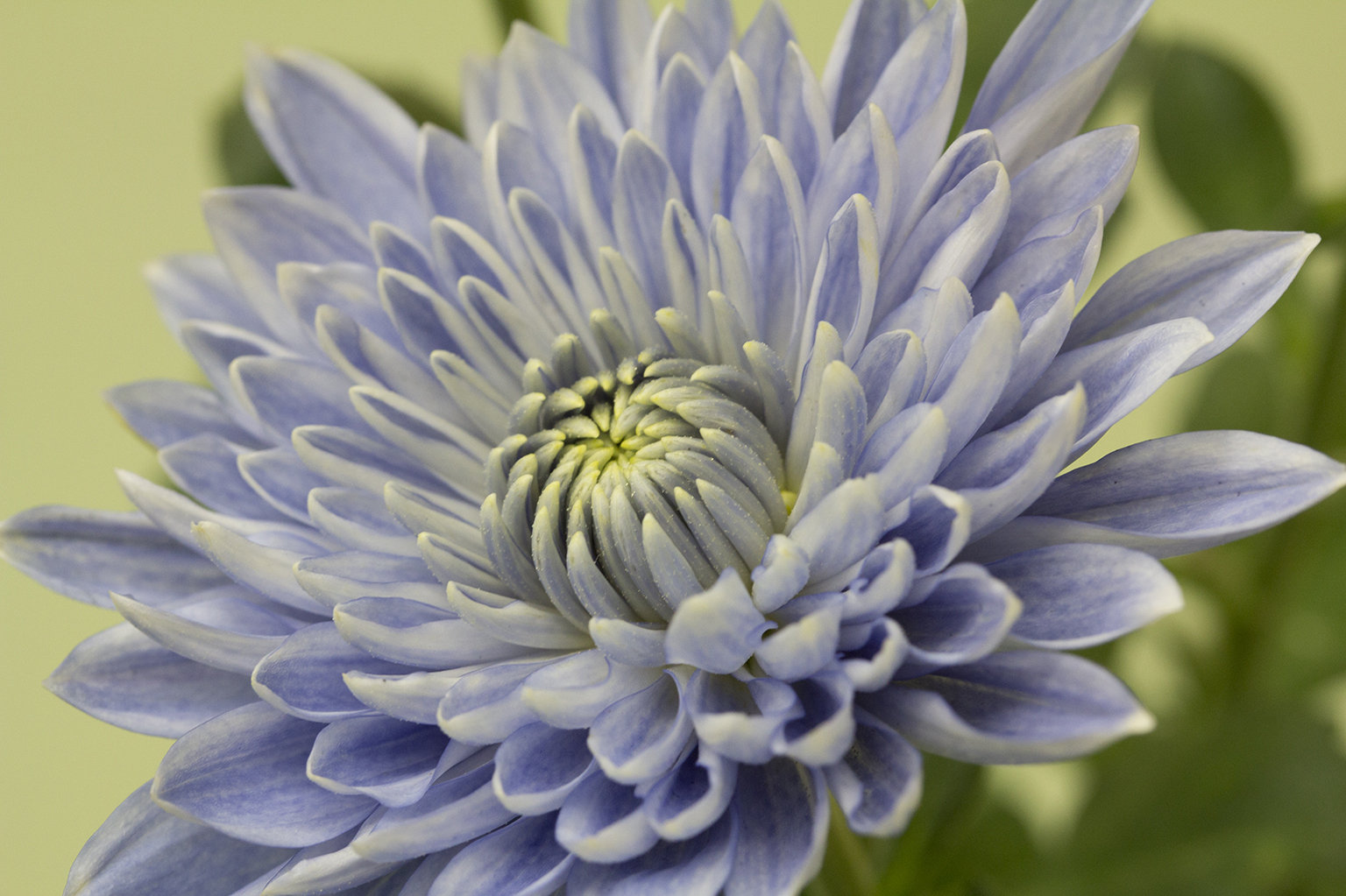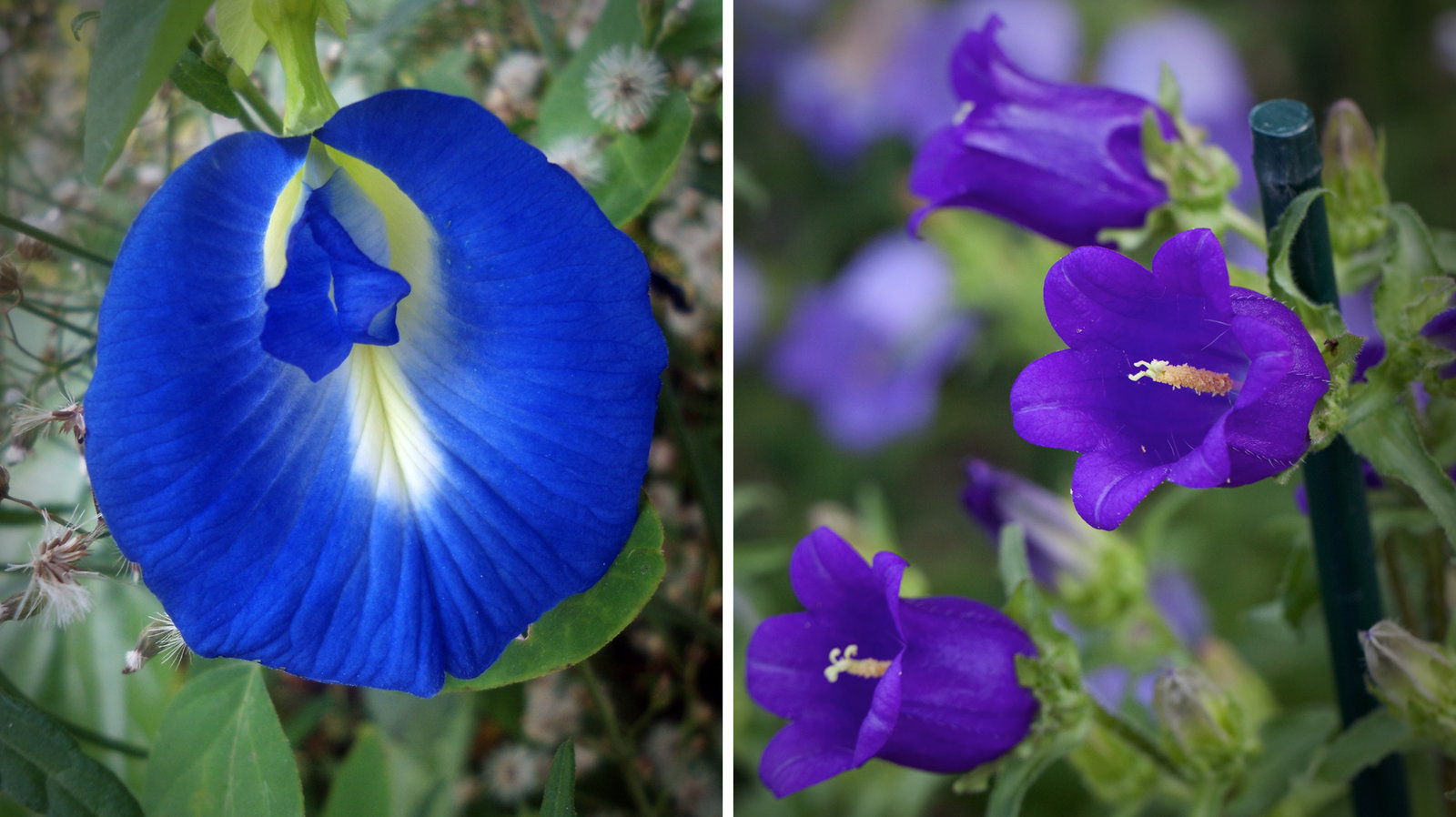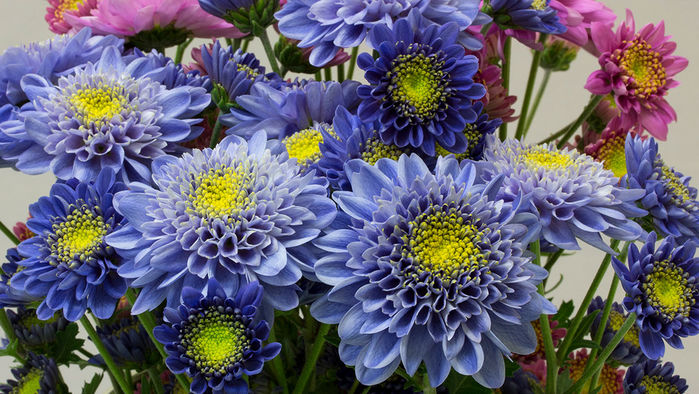The breakthrough behind those 'pure blue' chrysanthemums was pure luck
Sometimes, the most delightful findings are the most unexpected
In the early 1600s, wealth from seafaring, colonization, and increased trade led to the rise of a strange status symbol in the Netherlands. For a brief period of time, tulip bulbs became more valuable than gold.
Farmers sought new varieties, and demand for obscure and rare colors became fierce. The most sought-after were colors that were rare in nature, such as black tulips.
We haven't stopped seeking new flower combinations since. In a recent study out of Japan, scientists led by Naonobu Noda at the Institute of Vegetable and Floriculture Science created a “true blue” chrysanthemum. News of the breakthrough has made its way through much of the popular press, but the most interesting aspects of the study were lost in the process: the researchers demonstrated a veritable breakthrough in plant engineering by altering the metabolic pathways that determine the chrysanthemum's color.

A 'pure blue' genetically modified chrysanthemum
Naonobu Noda/NARO
The researchers started by taking genes from two other plants with blue flowers, Canterbury bells and butterfly peas, and inserting them into the chrysanthemum genome. Three genes were selected to be introduced: two blue pigment genes from the blue flowers and one gene that researchers hoped would turn off the natural pigmentation of the chrysanthemum.
The results were surprising. One of the three genes they used, the one turning off the natural pigmentation, proved completely unnecessary. Another was deemed non-essential. And the one gene that provided the base pigment they needed ended up interacting with unexpected partners within the cell to create a different blue than the researchers expected.
Most scientists don’t usually admit to this process of a lucky accident. Scientists need to ensure that more funding comes to their lab, and it’s easier to get the trust of a financial backer if you say that you meant for things to happen as they did, rather than admit to a bit of luck. To be fair, the researchers in this study pulled off an amazing feat, lucky or not. But the fact they admitted that luck was in the mix is a refreshing rarity in a peer reviewed paper.

Researchers used genes from the butterfly pea (left) and the Canterbury bell (right), combined with good luck, to create the blue flowers.
Wikimedia commons via NPR
Another surprise was that the pigment that was produced by the introduced genes was likely not the sole cause of the blue coloring. A number of small compounds that were already in the chrysanthemum, called 'copigments' by the authors, were essential to the blue color that ultimately emerged. In other words, if you replicated this exact protocol in a rose, it would be unlikely to produce a blue rose. This only worked because it was done with a chrysanthemum.
Recognizing the role luck played in the experiment's outcome will influence what researchers do in the area next. The protocol to making true-blue chrysanthemums is a well-researched and expertly executed fluke; it cannot be replicated exactly to make a blue rose or a blue tulip. It is not clear if this protocol can be amended to create a deeper hue or how exactly to engineer new colors in a chrysanthemum. The exact causes and effects of specific pigments, gene expression, and gene remodification are not as predictable as scientists would like, even if they are exciting new tools in the quest for bouquets of every color of the rainbow.

Naonobu Noda/NARO
Regardless of where the genetic engineering of flower color goes from here, it's interesting that, when it comes to creating beauty in the world, the discussion about modifying genes avoids the controversy that normally befalls such plants, possibly because this plant is engineered to be seen, not to be handled or eaten. How much can scientists tinker with flowers before the concept unsettles the public? What if the protocol is modified to create other aesthetic feats? Blue cauliflower? Purple grapefruit?
Or maybe even that elusive black tulip? We probably can’t build it now, but if someone tries, maybe they’ll get lucky, too.